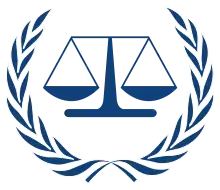Universal Declaration of Human Rights
The Universal Declaration of Human Rights (UDHR) is an international document adopted by the United Nations General Assembly that enshrines the rights and freedoms of all human beings. It was accepted by the General Assembly as Resolution 217 at its third session on 10 December 1948 at the Palais de Chaillot in Paris, France.[1] Of the 58 members of the United Nations at the time, 48 voted in favour, none against, eight abstained, and two did not vote.[2]
| Universal Declaration of Human Rights | |
|---|---|
 Eleanor Roosevelt holding the English language version of the Universal Declaration of Human Rights. | |
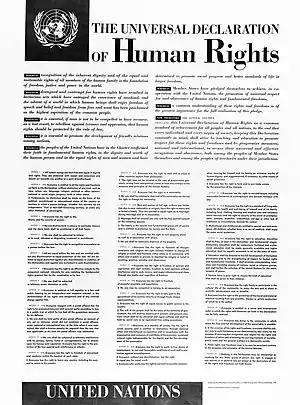 The human rights adopted by the United Nations General Assembly of its 183rd meeting, held in Paris on 10 December 1948 | |
| Created | 1948 |
| Ratified | 10 December 1948 |
| Location | Palais de Chaillot, Paris |
| Author(s) | Draft Committee[lower-alpha 1] |
| Purpose | Human rights |
| Rights |
|---|
 |
| Theoretical distinctions |
| Human rights |
| Rights by beneficiary |
| Other groups of rights |
| Wikisource has original text related to this article: |
Considered a foundational text in the history of human and civil rights, the Declaration consists of 30 articles detailing an individual's "basic rights and fundamental freedoms" and affirming their universal character as inherent, inalienable, and applicable to all human beings.[1] Adopted as a "common standard of achievement for all peoples and all nations", the UDHR commits nations to recognize all humans as being "born free and equal in dignity and rights" regardless of "nationality, place of residence, gender, national or ethnic origin, colour, religion, language, or any other status".[3] The Declaration is considered a "milestone document" for its "universalist language", which makes no reference to a particular culture, political system, or religion.[4][5] It directly inspired the development of international human rights law, and was the first step in the formulation of the International Bill of Human Rights, which was completed in 1966 and came into force in 1976.
Although not legally binding, the contents of the UDHR have been elaborated and incorporated into subsequent international treaties, regional human rights instruments, and national constitutions and legal codes.[1] All 193 member states of the United Nations have ratified at least one of the nine binding treaties influenced by the Declaration, with the vast majority ratifying four or more.[1] Some legal scholars have argued that because countries have consistently invoked the Declaration for more than 50 years, it has become binding as part of customary international law,[6][7] although courts in some nations have been more restrictive on its legal effect.[8][9] Nevertheless, the UDHR has influenced legal, political, and social developments on both the global and national levels, with its significance partly evidenced by its 524 translations, the most of any document in history.[10]
Structure and content
The underlying structure of the Universal Declaration was influenced by the Code Napoléon, including a preamble and introductory general principles.[11] Its final structure took form in the second draft prepared by French jurist René Cassin, who worked on the initial draft prepared by Canadian legal scholar John Peters Humphrey.
The Declaration consists of the following:
- The preamble sets out the historical and social causes that led to the necessity of drafting the Declaration.
- Articles 1–2 established the basic concepts of dignity, liberty, and equality.
- Articles 3–5 established other individual rights, such as the right to life and the prohibition of slavery and torture.
- Articles 6–11 refer to the fundamental legality of human rights with specific remedies cited for their defence when violated.
- Articles 12–17 established the rights of the individual towards the community, including freedom of movement and residence within each state, the right of property and the right to a nationality.
- Articles 18–21 sanctioned the so-called "constitutional liberties" and spiritual, public, and political freedoms, such as freedom of thought, opinion, religion and conscience, word, and peaceful association of the individual.
- Articles 22–27 sanctioned an individual's economic, social and cultural rights, including healthcare. It upholds an expansive right to a standard of living, provides for additional accommodations in case of physical debilitation or disability, and makes special mention of care given to those in motherhood or childhood.[12]
- Articles 28–30 established the general means of exercising these rights, the areas in which the rights of the individual cannot be applied, the duty of the individual to society, and the prohibition of the use of rights in contravention of the purposes of the United Nations Organisation.[13]
Cassin compared the Declaration to the portico of a Greek temple, with a foundation, steps, four columns, and a pediment.[14] Articles 1 and 2—with their principles of dignity, liberty, equality and brotherhood—served as the foundation blocks. The seven paragraphs of the preamble, setting out the reasons for the Declaration, represent the steps leading up to the temple. The main body of the Declaration forms the four columns. The first column (articles 3-11) constitutes rights of the individual, such as the right to life and the prohibition of slavery. The second column (articles 12-17) constitutes the rights of the individual in civil and political society. The third column (articles 18-21) is concerned with spiritual, public and political freedoms such as freedom of religion and freedom of association. The fourth column (articles 22-27) sets out social, economic and cultural rights. Finally, the last three articles provide the pediment which binds the structure together, as they emphasise the mutual duties of every individual to one another and to society.[14]
History
Background
During World War II, the Allies—known formally as the United Nations—adopted as their basic war aims the Four Freedoms: freedom of speech, freedom of religion, freedom from fear, and freedom from want.[15][16] Towards the end of the war, the United Nations Charter was debated, drafted, and ratified to reaffirm "faith in fundamental human rights, and dignity and worth of the human person" and commit all member states to promote "universal respect for, and observance of, human rights and fundamental freedoms for all without distinction as to race, sex, language, or religion".[17] When the atrocities committed by Nazi Germany became fully apparent after the war, the consensus within the world community was that the UN Charter did not sufficiently define the rights to which it referred.[18][19] It was deemed necessary to create a universal declaration that specified the rights of individuals so as to give effect to the Charter's provisions on human rights.[20]
Creation and drafting
In June 1946, the Economic and Social Council (ECOSOC)—a principal organ of the newly founded United Nations responsible for promoting human rights—created the Commission on Human Rights (CHR), a standing body within the UN tasked with preparing what was initially conceived as an International Bill of Rights.[21] It had 18 members from various national, religious, and political backgrounds, so as to be representative of humanity.[22] In February 1947, the Commission established a special Universal Declaration of Human Rights Drafting Committee, chaired by Eleanor Roosevelt of the United States, to write the articles of the Declaration. The Committee met in two sessions over the course of two years.
Canadian John Peters Humphrey, the newly appointed Director of the Division of Human Rights within the United Nations Secretariat, was called upon by the UN Secretary-General to work on the project, becoming the Declaration's principal drafter.[23][24] Other prominent members of the Drafting Committee included René Cassin of France; Committee Rapporteur Charles Malik of Lebanon, and Vice-Chairman P.C. Chang of the Republic of China.[25] A month after its creation, the Drafting Committee was expanded to include representatives of Australia, Chile, France, the Soviet Union, and the United Kingdom, in addition to the inaugural members from China, France, Lebanon, and the United States.[26]
Humphrey is credited with devising the "blueprint" for the Declaration, while Cassin composed the first draft.[27] Both received considerable input from other members, each of whom reflected different professional and ideological backgrounds. The Declaration's pro-family phrases allegedly derived from Cassin and Malik, who were influenced by the Christian Democracy movement;[28] Malik, a Christian theologian, was known for appealing across religious lines, as well as to different Christian sects.[29] Chang urged removing all references to religion to make the document more universal, and used aspects of Confucianism to settle stalemates in negotiations.[30] Hernán Santa Cruz of Chile, an educator and judge, strongly supported the inclusion of socioeconomic rights, which had been opposed by some Western nations.[29]
In her memoirs, Roosevelt commented on the debates and discussions that informed the UDHR, describing one such exchange during the Drafting Committee's first session in June 1947:
Dr. Chang was a pluralist and held forth in charming fashion on the proposition that there is more than one kind of ultimate reality. The Declaration, he said, should reflect more than simply Western ideas and Dr. Humphrey would have to be eclectic in his approach. His remark, though addressed to Dr. Humphrey, was really directed at Dr. Malik, from whom it drew a prompt retort as he expounded at some length the philosophy of Thomas Aquinas. Dr. Humphrey joined enthusiastically in the discussion, and I remember that at one point Dr. Chang suggested that the Secretariat might well spend a few months studying the fundamentals of Confucianism![30]
In May 1948, roughly a year after its creation, the Drafting Committee held its second and final session, where it considered the comments and suggestions of member states and international bodies, principally the UN Conference on Freedom of Information, which took place the prior March and April; the Commission on the Status of Women, a body within ECOSOC that reported on the state of women's rights worldwide; and the Ninth International Conference of American States, held in Bogota, Colombia in spring of 1948, which adopted the American Declaration of the Rights and Duties of Man, the world's first general international human rights instrument.[31] Delegates and consultants from several UN bodies, international organisations, and nongovernmental organisations also attended and submitted suggestions.[32] It was also hoped that an International Bill of Human Rights with legal force could be drafted and submitted for adoption alongside the Declaration.[31]
Upon the session's conclusion on 21 May 1948, the Committee submitted to the Commission on Human Rights a redrafted text of the "International Declaration of Human Rights" and the "International Covenant of Human Rights", which together would form an International Bill of Rights.[31] The redrafted Declaration was further examined and discussed by the Commission on Human Rights in its third session in Geneva 21 May through 18 June 1948.[33] The so-called "Geneva text" was circulated among member states and subject to several proposed amendments; for example, Hansa Mehta of India notably suggested that the Declaration assert that "all human beings are created equal", instead of "all men are created equal", to better reflect gender quality.[34]
With a vote of 12 in favour, none opposed, and four abstaining, the CHR approved the proposed Declaration, though was unable to examine the contents and implementation of the proposed Covenant.[35] The Commission forwarded the approved text of the Declaration, as well as the Covenant, to the Economic and Social Council for its review and approval during its seventh session in July and August 1948.[36] The Council adopted Resolution 151(VII) of 26 August 1948, transmitting the draft International Declaration of Human Rights to the UN General Assembly.[37]
The Third Committee of the General Assembly, which convened from 30 September to 7 December 1948, held 81 meetings concerning the draft Declaration, including debating and resolving 168 proposals for amendments by UN member states.[38][39] On its 178th meeting on 6 December, the Third Committee adopted the Declaration with 29 votes in favour, none opposed and seven abstentions.[38] The document was subsequently submitted to the wider General Assembly for its consideration on 9 and 10 December 1948.
Adoption
The Universal Declaration was adopted by the General Assembly as UN Resolution A/RES/217(III)[A] on 10 December 1948 in Palais de Chaillot, Paris.[40][lower-alpha 2] Of the 58 UN members at the time,[41] 48 voted in favour, none against, eight abstained,[42][43] and Honduras and Yemen failed to vote or abstain.[44]
Eleanor Roosevelt is credited with having been instrumental in mustering support for the Declaration's adoption, both in her native U.S. and across the world, owing to her ability to appeal to different and often opposing political blocs.[45]
The meeting record provides firsthand insight into the debate on the Declaration's adoption.[46] South Africa's position can be seen as an attempt to protect its system of apartheid, which clearly violated several articles in the Declaration.[42] Saudi Arabia's abstention was prompted primarily by two of the Declaration's articles: Article 18, which states that everyone has the right "to change his religion or belief", and Article 16, on equal marriage rights.[42] The abstentions by the six communist nations centred on the view that the Declaration did not go far enough in condemning fascism and Nazism;[47] Eleanor Roosevelt attributed the actual point of contention as being Article 13, which provided the right of citizens to leave their countries.[48] Other observers point to the Soviet bloc's opposition to the Declaration's "negative rights", such as provisions calling on governments not to violate certain civil and political rights.[49]
The British delegation, while voting in favor of the Declaration, expressed frustration that the proposed document had moral obligations but lacked legal force;[50] it would not be until 1976 that the International Covenant on Civil and Political Rights came into force, giving a legal status to most of the Declaration.

Green countries: voted in favour;
Orange countries: abstained;
Black countries: failed to abstain or vote;
Grey countries: were not part of the UN at time of voting
The 48 countries that voted in favour of the Declaration are:[51]
.svg.png.webp) Afghanistan
Afghanistan Argentina
Argentina.svg.png.webp) Australia
Australia.svg.png.webp) Belgium
Belgium Bolivia
Bolivia.svg.png.webp) Brazil
Brazil.svg.png.webp) Canada[a]
Canada[a]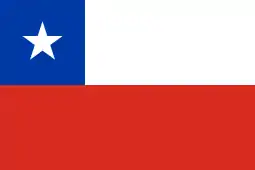 Chile
Chile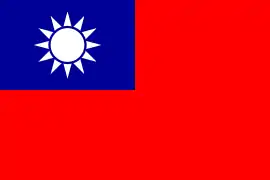 China
China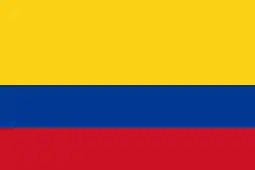 Colombia
Colombia Costa Rica
Costa Rica.svg.png.webp) Cuba
Cuba Denmark
Denmark Dominican Republic
Dominican Republic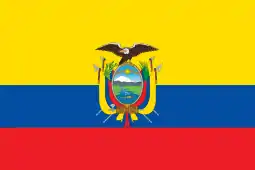 Ecuador
Ecuador.svg.png.webp) Egypt
Egypt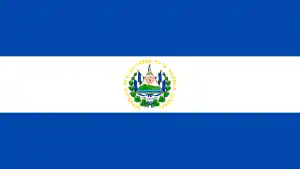 El Salvador
El Salvador.svg.png.webp) Ethiopia
Ethiopia.svg.png.webp) France
France.svg.png.webp) Greece
Greece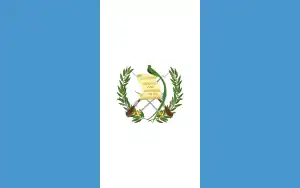 Guatemala
Guatemala.svg.png.webp) Haiti
Haiti Iceland
Iceland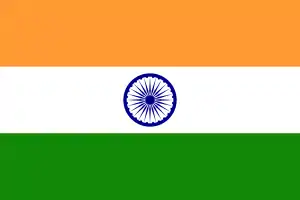 India
India.svg.png.webp) Iran
Iran.svg.png.webp) Iraq
Iraq Lebanon
Lebanon Liberia
Liberia Luxembourg
Luxembourg.svg.png.webp) Mayanmar
Mayanmar.svg.png.webp) Mexico
Mexico Netherlands
Netherlands New Zealand
New Zealand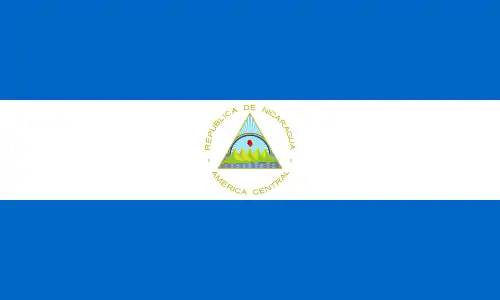 Nicaragua
Nicaragua Norway
Norway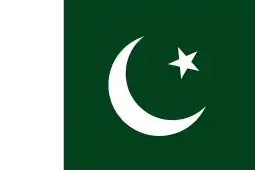 Pakistan
Pakistan Panama
Panama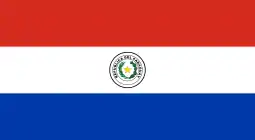 Paraguay
Paraguay Peru
Peru.svg.png.webp) Philippines
Philippines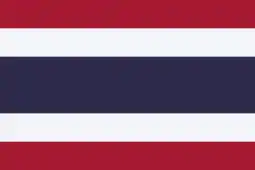 Siam
Siam Sweden
Sweden.svg.png.webp) Syria
Syria Turkey
Turkey United Kingdom
United Kingdom.svg.png.webp) United States
United States Uruguay
Uruguay.svg.png.webp) Venezuela
Venezuela
- a. ^ Despite the central role played by the Canadian John Peters Humphrey, the Canadian Government at first abstained from voting on the Declaration's draft, but later voted in favour of the final draft in the General Assembly.[52]
Eight countries abstained:[51]
Two countries did not vote:
The majority of current UN member states gained sovereignty and joined the organisation later, which accounts for the relatively small number of states entitled to the historical vote.[53]
International Human Rights Day
December 10, the anniversary of the adoption of the Universal Declaration, is celebrated annually as World Human Rights Day or International Human Rights Day. The commemoration is observed by individuals, community and religious groups, human rights organizations, parliaments, governments, and the United Nations. Decadal commemorations are often accompanied by campaigns to promote awareness of the Declaration and of human rights general. 2008 marked the 60th anniversary of the Declaration, and was accompanied by year-long activities around the theme "Dignity and justice for all of us".[54] Likewise, the 70th anniversary in 2018 was marked by the global #StandUpForHumanRights campaign, which targeted youth.[55]
Impact
Significance
.JPG.webp)
The UDHR is considered groundbreaking for providing a comprehensive and universal set of principles in a secular, apolitical document that explicitly transcends cultures, religions, legal systems, and political ideologies.[5] Its claim to universality has been described as "boundlessly idealistic" and the "most ambitious feature".[56] The Declaration was the first instrument of international law to use the phrase "rule of law", thereby establishing the principle that all members of all societies are equally bound by the law regardless of the jurisdiction or political system.[57]
The Declaration was officially adopted as a bilingual document in English and French, with official translations in Chinese, Russian and Spanish, all of which are official working languages of the UN.[58] Due to its inherently universalist nature, the UN has made a concerted effort to translate the document into as many languages as possible, in collaboration with private and public entities and individuals.[59] In 1999, the Guinness Book of Records described the Declaration as the world's "Most Translated Document", with 298 translations; the record was once again certified a decade later when the text reached 370 different languages and dialects.[60][61] The UDHR achieved a milestone of over 500 translations in 2016, and as of 2020, has been translated into 524 languages,[62] remaining the most translated document.[63]
In its preamble, governments commit themselves and their people to progressive measures that secure the universal and effective recognition and observance of the human rights set out in the Declaration. Eleanor Roosevelt supported the adoption of the text as a declaration, rather than as a treaty, because she believed that it would have the same kind of influence on global society as the United States Declaration of Independence had within the United States.[64] Even though it is not legally binding, the Declaration has been incorporated into or influenced most national constitutions since 1948. It has also served as the foundation for a growing number of national laws, international laws, and treaties, as well as for a growing number of regional, subnational, and national institutions protecting and promoting human rights.
The Declaration's all-encompassing provisions serve as a "yardstick" and point of reference by which countries' commitments to human rights are judged, such as through the treaty bodies and other mechanisms of various human rights treaties that monitor implementation.[65]
Legal effect
In international law, a declaration is distinct from a treaty in that it generally states aspirations or understandings among the parties, rather than binding obligations.[66] The Declaration was explicitly adopted to reflect and elaborate on the customary international law reflected in the "fundamental freedoms" and "human rights" referenced in the United Nations Charter, which is binding on all member states.[66] For this reason, the Universal Declaration of Human Rights is a fundamental constitutive document of the United Nations and, by extension, all 193 parties of the UN Charter.
Many international lawyers believe that the Declaration forms part of customary international law and is a powerful tool in applying diplomatic and moral pressure to governments that violate its articles.[67][68][69][70][71][72] One prominent international jurist described the UDHR as being "universally regarded as expounding generally accepted norms."[73] Other legal scholars have further argued that the Declaration constitutes jus cogens, fundamental principles of international law from which no state may deviate or derogate.[74] The 1968 United Nations International Conference on Human Rights advised that the Declaration "constitutes an obligation for the members of the international community" to all persons.[75] Courts in various countries have also affirmed that the Declaration constitues customary international law.[76]
The Declaration has served as the foundation for two binding UN human rights covenants: the International Covenant on Civil and Political Rights and the International Covenant on Economic, Social and Cultural Rights. The principles of the Declaration are elaborated in other binding international treaties such as the International Convention on the Elimination of All Forms of Racial Discrimination, the International Convention on the Elimination of Discrimination Against Women, the United Nations Convention on the Rights of the Child, the United Nations Convention Against Torture, and many more. The Declaration continues to be widely cited by governments, academics, advocates, and constitutional courts, and by individuals who appeal to its principles for the protection of their recognised human rights.[77]
National law
One scholar estimates that at least 90 national constitutions drafted since the Declaration's adoption in 1948 "contain statements of fundamental rights which, where they do not faithfully reproduce the provisions of the Universal Declaration, are at least inspired by it."[78] At least 20 African nations that attained independence in the decades immediately following 1948 explicitly referenced the UDHR in their constitutions.[78] As of 2014, the constitutions that still directly cite the Declaration are those of Afghanistan, Benin, Bosnia-Herzegovina, Burkina Faso, Burundi, Cambodia, Chad, Comoros, Cote d'Ivoire, Equatorial Guinea, Ethiopia, Democratic Republic of the Congo, Gabon, Guinea, Haiti, Mali, Mauritania, Nicaragua, Niger, Portugal, Romania, Rwanda, Sao Tome and Principe, Senegal, Somalia, Spain, Togo and Yemen.[78] Moreover, the constitutions of Portugal, Romania, Sao Tome and Principe, and Spain compel their courts to "interpret" constitutional norms consistently with the Universal Declaration.[79]
Judicial and political figures in many nations have directly invoked the UDHR as an influence or inspiration on their courts, constitutions, or legal codes. Indian courts have ruled the Indian Constitution "[embodies] most of the articles contained in the Declaration".[80] Nations as diverse as Antigua, Chad, Chile, Kazakhstan, Saint Vincent and the Grenadines, and Zimbabwe have derived constitutional and legal provisions from the Declaration.[78] In some cases, specific provisions of the UDHR are incorporated or otherwise reflected in national law. The right to health or to protection of health is found in the constitutions of Belgium, Kyrgyzstan, Paraguay, Peru, Thailand, and Togo; constitutional obligations on the government to provide health services exist in Armenia, Cambodia, Ethiopia, Finland, South Korea, Kyrgyzstan, Paraguay, Thailand, and Yemen.[80]
A survey of U.S. cases through 1988 found five references to the Declaration by the United States Supreme Court; sixteen references by federal courts of appeal; twenty-four references by federal district courts; one reference by a bankruptcy court; and several references by five state courts.[81] Likewise, research conducted in 1994 identified 94 references to the Declaration by federal and state courts across the U.S.[82]
In 2004, the U.S. Supreme Court ruled in Sosa v. Alvarez-Machain that the Declaration "does not of its own force impose obligations as a matter of international law", and that the political branches of the U.S. federal government can "scrutinize" the nation's obligations to international instruments and their enforceability.[9] However, U.S. courts and legislatures may still use the Declaration to inform or interpret laws concerned with human rights,[83] a position shared by the courts of Belgium, the Netherlands, India, Sri Lanka.[83]
Reaction
Praise and support
The Universal Declaration has received praise from a number of notable activists, jurists, and political leaders. Lebanese philosopher and diplomat Charles Malik called it "an international document of the first order of importance",[84] while Eleanor Roosevelt—first chairperson of the Commission on Human Rights (CHR) that helped draft the Declaration—stated that it "may well become the international Magna Carta of all men everywhere."[85] At the 1993 UN World Conference on Human Rights, one of the largest international gatherings on human rights,[86] diplomats and officials representing 100 nations reaffirmed their governments' "commitment to the purposes and principles contained in the Charter of the United Nations and the Universal Declaration of Human Rights" and emphasized that the Declaration as "the source of inspiration and has been the basis for the United Nations in making advances in standard setting as contained in the existing international human rights instruments."[78] In a speech on 5 October 1995, Pope John Paul II called the Declaration "one of the highest expressions of the human conscience of our time", despite the Vatican never adopting it.[87] In a statement on 10 December 2003 on behalf of the European Union, Marcello Spatafora said that the Declaration "placed human rights at the centre of the framework of principles and obligations shaping relations within the international community."[88]
As a pillar of international human rights, the UDHR enjoys widespread support among international and nongovernmental organizations. The International Federation for Human Rights (FIDH), one of the oldest human rights organizations, has as its core mandate the promotion of the respect for all rights set out in the Declaration, the International Covenant on Civil and Political Rights, and the International Covenant on Economic, Social and Cultural Rights.[89][90] Amnesty International, the third oldest international human rights organization,[91] has regularly observed Human Rights Day and organised worldwide events to bring awareness and support of the UDHR.[92] Some organisations, such as the Quaker United Nations Office, the American Friends Service Committee, and Youth for Human Rights International (YHRI) have developed curriculum or programs to educate young people on the Universal Declaration of Human Rights.[93][94][95]
Specific provisions of the UDHR are cited or elaborated by interest groups in relation to their specific area of focus. In 1997, the council of the American Library Association (ALA) endorsed Articles 18 through 20 concerning freedoms of thought, opinion, and expression,[96] which were codified in the ALA Universal Right to Free Expression and the Library Bill of Rights.[97] The Declaration formed the basis of the ALA's claim that censorship, invasion of privacy, and interference of opinions are human rights violations.[98]
Islamic countries
Most Muslim-majority countries that were then members of the UN signed the Declaration in 1948, including Afghanistan, Egypt, Iraq, Iran, and Syria; Turkey, which had an overwhelmingly Muslim population but an officially secular government, also voted in favor.[99] Saudi Arabia was the sole abstainer on the Declaration among Muslim nations, claiming that it violated Sharia law.[100] Pakistan, officially an Islamic republic, signed the declaration and critiqued the Saudi position,[101] strongly arguing in favour of including freedom of religion.[102]
Moreover, some Muslim diplomats would later help draft other UN human rights treaties. For example, Iraq's representative to the UN, Bedia Afnan's insistence on wording that recognized gender equality resulted in Article 3 within the ICCPR and ICESCR, which, together with the UDHR, form the International Bill of Rights. Pakistani diplomat Shaista Suhrawardy Ikramullah influenced the drafting of the Declaration, especially with respect to women's rights, and played a role in the preparation of the 1951 Genocide Convention.[102]
In 1982, the Iranian representative to the United Nations, who represented the country's newly installed Islamic republic, said that the Declaration was "a secular understanding of the Judeo-Christian tradition" that could not be implemented by Muslims without conflict with Sharia.[103]
On 30 June 2000, member states of the Organisation of Islamic Cooperation, which represents most of the Muslim world, officially resolved to support the Cairo Declaration on Human Rights in Islam,[104] an alternative document that says people have "freedom and right to a dignified life in accordance with the Islamic Shari'ah", without any discrimination on grounds of "race, colour, language, sex, religious belief, political affiliation, social status or other considerations". The Cairo Declaration is widely acknowledged to be a response to the UDHR, and uses similar universalist language, albeit derived solely from Islamic jurisprudence.[105]
A number of scholars in different fields have expressed concerns with the Declaration's alleged Western bias. Abdulaziz Sachedina observes that Muslims broadly agree with the Declaration's universalist premise, which is shared by Islam, but differ on specific contents, which many find "insensitive to particular Muslim cultural values, especially when it comes to speaking about individual rights in the context of collective and family values in Muslim society".[106] However, he notes that most Muslim scholars, while opposing the inherently secular framework of the document, do respect and acknowledge some of its "foundations".[107] Sachedina adds that many Christians similarly criticise the Declaration for reflecting a secular and liberal bias in opposition to certain religious values.[107]
Riffat Hassan, a Pakistani-born Muslim theologian, has argued:
What needs to be pointed out to those who uphold the Universal Declaration of Human Rights to be the highest, or sole, model, of a charter of equality and liberty for all human beings, is that given the Western origin and orientation of this Declaration, the "universality" of the assumptions on which it is based is – at the very least – problematic and subject to questioning. Furthermore, the alleged incompatibility between the concept of human rights and religion in general, or particular religions such as Islam, needs to be examined in an unbiased way.[108]
Faisal Kutty, a Muslim Canadian human rights activist, opines that a "strong argument can be made that the current formulation of international human rights constitutes a cultural structure in which western society finds itself easily at home ... It is important to acknowledge and appreciate that other societies may have equally valid alternative conceptions of human rights."[109]
Irene Oh, the director of the peace studies program at Georgetown University, has proposed that Muslim opposition to the UDHR, and the broader debate about the document's secular and Western bias, could be resolved through mutual dialogue grounded in comparative descriptive ethics.[110]
"The Right to Refuse to Kill"
Groups such as Amnesty International[111] and War Resisters International[112] have advocated for "The Right to Refuse to Kill" to be added to the Universal Declaration, as has Sean MacBride, a former Assistant Secretary-General of the United Nations and Nobel Peace Prize laureate.[113] War Resisters International has stated that the right to conscientious objection to military service is primarily derived from Article 18 of the UDHR, which preserves the right to freedom of thought, conscience, and religion.[112] Some steps have been taken within the UN to make the right more explicit, with the Human Rights Council repeatedly affirming that Article 18 enshrines "the right of everyone to have conscientious objection to military service as a legitimate exercise of the right to freedom of thought, conscience and religion".[114][115]
American Anthropological Association
The American Anthropological Association criticized the UDHR during its drafting process, warning that its definition of universal rights reflected a Western paradigm that was unfair to non-Western nations. They further argued that the West's history of colonialism and evangelism made them a problematic moral representative for the rest of the world. They proposed three notes for consideration with underlying themes of cultural relativism:
- The individual realizes his personality through his culture, hence respect for individual differences entails a respect for cultural differences.
- Respect for differences between cultures is validated by the scientific fact that no technique of qualitatively evaluating cultures has been discovered.
- Standards and values are relative to the culture from which they derive so that any attempt to formulate postulates that grow out of the beliefs or moral codes of one culture must to that extent detract from the applicability of any Declaration of Human Rights to mankind as a whole.[116]
Bangkok Declaration
During the lead up to the World Conference on Human Rights held in 1993, ministers from several Asian states adopted the Bangkok Declaration, reaffirming their governments' commitment to the principles of the United Nations Charter and the Universal Declaration of Human Rights. They stated their view of the interdependence and indivisibility of human rights and stressed the need for universality, objectivity, and non-selectivity of human rights. However, at the same time, they emphasised the principles of sovereignty and non-interference, calling for greater emphasis on economic, social, and cultural rights—in particular, the right to economic development by establishing international collaboration directives between the signatories. The Bangkok Declaration is considered to be a landmark expression of Asian values with respect to human rights, which offers an extended critique of human rights universalism.[117]
See also
Human rights
Non-binding agreements
International human rights law
- Fourth Geneva Convention (1949)
- European Convention on Human Rights (1952)
- Convention Relating to the Status of Refugees (1951)
- Convention on the Elimination of All Forms of Racial Discrimination (1969)
- International Covenant on Civil and Political Rights (1976)
- International Covenant on Economic, Social and Cultural Rights (1976)
- Convention on the Elimination of All Forms of Discrimination Against Women (1981)
- Convention on the Rights of the Child (1990)
- Charter of Fundamental Rights of the European Union (2000)
- Convention on the Rights of Persons with Disabilities (2007)
Thinkers influencing the Declaration
Other
- Slavery in the United States
- Slavery in Russia
- Slavery in international law
- Slave Trade Acts
- Human rights in China (PRC)
- LGBT rights at the United Nations
- Command responsibility
- Moral universalism
- Declaration on Great Apes, an as-yet unsuccessful effort to extend some human rights to other great apes
- United Nations Prize in the Field of Human Rights
- Consent of the governed
- Racial equality proposal (1919)
- The Farewell Sermon (632 CE)
- Youth for Human Rights International
- List of literary works by number of translations
- Monica Ross
- Right to education
Notes
- Included John Peters Humphrey (Canada), René Cassin (France), P. C. Chang (Republic of China), Charles Malik (Lebanon), Hansa Mehta (India) and Eleanor Roosevelt (United States); see Creation and drafting section above.
- UN headquarters in New York would not be complete until 1952, after which it became the permanent seat of the General Assembly.
Citations
- "Human Rights Law". www.un.org. 2015-09-02. Retrieved 2020-08-20.
- "A/RES/217(III)". UNBISNET. Retrieved 24 May 2015.
- UDHR Booklet, Art. 2.
- "Universal Declaration of Human Rights". www.amnesty.org. Retrieved 2020-08-20.
- "Human Rights: The Universal Declaration vs The Cairo Declaration". Middle East Centre. 2012-12-10. Retrieved 2020-08-20.
- Henry J Steiner and Philip Alston, International Human Rights in Context: Law, Politics, Morals, (2nd ed), Oxford University Press, Oxford, 2000.
- Hurst Hannum, The universal declaration of human rights in National and International Law, p.145
- Posner, Eric (2014-12-04). "The case against human rights | Eric Posner". The Guardian. ISSN 0261-3077. Retrieved 2020-01-22.
- Sosa v. Alvarez-Machain, 542 U.S. 692, 734 (2004).
- "OHCHR | Universal Declaration of Human Rights Main". www.ohchr.org. Retrieved 2020-08-20.
- Glendon 2002, pp. 62–64.
- Universal Declaration of Human Rights, United Nations, 1948
- Glendon 2002, Chapter 10.
- "OHCHR | Universal Declaration of Human Rights at 70: 30 Articles on 30 Articles - Article 28". www.ohchr.org. Retrieved 2020-09-14.
- "FDR, "The Four Freedoms," Speech Text |". Voicesofdemocracy.umd.edu. January 6, 1941. Retrieved April 25, 2018.
- Bodnar, John, The "Good War" in American Memory. (Maryland: Johns Hopkins University Press, 2010) 11
- "United Nations Charter, preamble and article 55". United Nations. Retrieved 2013-04-20.
- Cataclysm and World Response in Drafting and Adoption : The Universal Declaration of Human Rights, udhr.org.
- "UDHR50: Didn't Nazi tyranny end all hope for protecting human rights in the modern world?". Udhr.org. 1998-08-28. Archived from the original on 2012-05-25. Retrieved 2012-07-07.
- "UDHR – History of human rights". Universalrights.net. Retrieved 2012-07-07.
- Morsink 1999, p. 4
- "History of the Document". www.un.org. 2015-10-06. Retrieved 2020-09-13.
- Morsink 1999, p. 5
- Morsink 1999, p. 133
- The Declaration was drafted during the Chinese Civil War. P.C. Chang was appointed as a representative by the Republic of China, then the recognised government of China, but which was driven from mainland China and now administers only Taiwan and nearby islands (history.com).
- Voinea, Nicoleta. "Drafting of the Universal Declaration of Human Rights". research.un.org. Retrieved 2020-09-13.
- "History of the Document". www.un.org. 2015-10-06. Retrieved 2020-09-13.
- Carlson, Allan: Globalizing Family Values Archived 2012-05-25 at Archive.today, 12 January 2004.
- Voinea, Nicoleta. "Drafting of the Universal Declaration of Human Rights". research.un.org. Retrieved 2020-09-13.
- "The Drafters of the Universal Declaration of Human Rights". www.un.org. 2015-10-07. Retrieved 2020-09-13.
- Voinea, Nicoleta. "Drafting of the Universal Declaration of Human Rights". research.un.org. Retrieved 2020-09-13.
- "E/CN.4/95 - E - E/CN.4/95". undocs.org. Retrieved 2020-09-13.
- Voinea, Nicoleta. "Drafting of the Universal Declaration of Human Rights". research.un.org. Retrieved 2020-09-13.
- Jain, Devaki (2005). Women, Development and the UN. Bloomington: Indiana University Press. p. 20
- "E/CN.4/SR.81 - E - E/CN.4/SR.81". undocs.org. Retrieved 2020-09-13.
- Voinea, Nicoleta. "Drafting of the Universal Declaration of Human Rights". research.un.org. Retrieved 2020-09-13.
- Voinea, Nicoleta. "Drafting of the Universal Declaration of Human Rights". research.un.org. Retrieved 2020-09-13.
- Voinea, Nicoleta. "Drafting of the Universal Declaration of Human Rights". research.un.org. Retrieved 2020-09-13.
- "Drafting of the Universal Declaration of Human Rights". Research Guides. United Nations. Dag Hammarskjöld Library. Retrieved 2015-04-17.
- "Palais de Chaillot. Chaillot museums". Paris Digest. 2018. Retrieved 2018-12-31.
- "Growth in United Nations membership, 1945–present". www.un.org. Retrieved 2018-02-01.
- CCNMTL. "default". Center for New Media Teaching and Learning (CCNMTL). Columbia University. Retrieved 2013-07-12.
- UNAC. "Questions and answers about the Universal Declaration of Human Rights". United Nations Association in Canada (UNAC). p. "Who are the signatories of the Declaration?". Archived from the original on 2012-09-12.
- Jost Müller-Neuhof (2008-12-10). "Menschenrechte: Die mächtigste Idee der Welt". Der Tagesspiegel (in German). Retrieved 2013-07-12.
- "70 Years of Impact: Insights on the Universal Declaration of Human Rights". unfoundation.org. 2018-12-05. Retrieved 2020-09-13.
- United Nations. "default". Retrieved 2017-08-30.
- Peter Danchin. "The Universal Declaration of Human Rights: Drafting History – 10. Plenary Session of the Third General Assembly Session". Retrieved 2015-02-25.
- Glendon 2002, pp. 169–70
- "70 Years of Impact: Insights on the Universal Declaration of Human Rights". unfoundation.org. 2018-12-05. Retrieved 2020-09-13.
- Universal Declaration of Human Rights. Final authorized text. The British Library. September 1952. Retrieved 16 August 2015.
- "Yearbook of the United Nations 1948–1949 p 535" (PDF). Archived from the original (PDF) on September 27, 2013. Retrieved 24 July 2014.
- Schabas, William (1998). "Canada and the Adoption of Universal Declaration of Human Rights" (PDF). McGill Law Journal. 43: 403.
- "OHCHR - Human Rights in the World". www.ohchr.org.
- "The Universal Declaration of Human Rights: 1948–2008". United Nations. Retrieved 15 February 2011.
- Nations, United. "Human Rights Day". United Nations. Retrieved 2020-09-13.
- "Boundlessly Idealistic, Universal Declaration Of Human Rights Is Still Resisted". NPR.org. Retrieved 2020-08-20.
- "Universal Declaration of Human Rights". www.un.org. Retrieved 2017-12-07.
- "A/RES/217(III)". UNBISNET. Retrieved 13 Jun 2017.
- "OHCHR | About the Universal Declaration of Human Rights Translation Project". www.ohchr.org. Retrieved 2020-09-13.
- "Most translated document".
- "Universal Declaration of Human Rights". United Nations Office of the High Commissioner for Human Rights.
- "OHCHR | World Record". www.ohchr.org. Retrieved 2020-08-20.
- "Most translated document". Guinness World Records. Retrieved 2020-09-13.
- Timmons, Eric J. "Mspy and USA declaration". 4everY. SpySoft. Retrieved 26 December 2017.
- "70 Years of Impact: Insights on the Universal Declaration of Human Rights". unfoundation.org. 2018-12-05. Retrieved 2020-09-13.
- "Glossary of terms relating to Treaty actions". treaties.un.org. Retrieved 2020-09-13.
- Office of the High Commissioner for Human Rights. "Digital record of the UDHR". United Nations.
- John Peters, Humphrey (23 May 1979). "The universal declaration of human rights, Its history, impact andjuridical character". In Bertrand G., Ramcharan (ed.). Human Rights: Thirty Years After the Universal Declaration : Commemorative Volume on the Occasion of the Thirtieth Anniversary of the Universal Declaration of Human Rights. The Hage: Nijhoff. p. 37. ISBN 90-247-2145-8.
- Sohn, Louis B. (1977). "The human rights law of the charter". Texas International Law Journal. 12: 133. ISSN 0163-7479. Retrieved 2018-03-21.
- Myres S., McDougal; Lasswell, Harold D.; Chen, Lung-chu (1969). "Human Rights and World Public Order: A Framework for Policy-Oriented Inquiry". Faculty Scholarship Series. Yale Law School. pp. 273–274, 325–327. Retrieved 2018-03-21.
- Katharine G. Young, Freedom, Want and Economic and Social Rights: Frame and Law, 24 Md. J. Int’l L. 182 (2009) (Symposium on 60th Anniversary of the Universal Declaration of Human Rights)
- Anthony A. D'Amato (1987). International law: process and prospect. Transnational Publishers. pp. 123–147. ISBN 978-0-941320-35-1.
- R. Lallah, 2 JUDICIAL COLLOQUIUM IN BANGALORE, DEVELOPING HUMAN RIGHTS JURISPRUDENCE, THE DOMESTIC APPLICATION OF INTERNATIONAL HUMAN RIGHTS NORMS 33 (London, Commonwealth Secretariat, 1998)
- Justice M. Haleem, "The Domestic Application of International Human Rights Norms", Developing Human Rights Jurisprudence, supra note 158, at 97; Myres S. Mcdougal, Harold Lasswell & Lung-Chu Chen, "Human Rights and World Public Order" 274 (New Haven, CT: Yale University Press, 1980.
- "Human rights and the international community: twenty questions". UNESCO. 2018-02-14. Retrieved 2020-09-14.
- See generally Hurst Hannum, "The Status Of The Universal Declaration Of Human Rights In National And International Law", GA. J. INT'L & COMP. L ,Vol 25:287.
- "What is the Universal Declaration of Human Rights? | Australian Human Rights Commission". humanrights.gov.au. Retrieved 2020-09-13.
- Hurst Hannum, THE UDHR IN NATIONAL AND INTERNATIONAL LAW , pp. 151-152.
- Portuguese Constitution, article 16(2); Romanian Constitution, article 20(1); Sao Tom6 and Principe Constitution, article 17(2); Spanish Constitution, article 10(2).
- Bombay Education Society v. State of Bombay, 1954 Bom. 271, at 1350.
- BETH ANDRUS, THE UNIVERSAL DECLARATION OF HUMAN RiGHTS 1948-1988: HUMAN RIGHTS, THE UNrrED NATIONS AND AMNESTY INTERNATIONAL 10-11 (Amnesty InternationalU.S.A. Legal Support Network, 1988). A
- Hurst Hannum, THE STATUS OF THE UNIVERSAL DECLARATION OF HUMAN RIGHTS IN NATIONAL AND INTERNATIONAL LAW GA. J. INT'L & COMP. L ,Vol 25:287, p. 304.
- G. Christenson, "Using Human Rights Law to Inform Due Process and Equal Protection Analyses," University of Cincinnati Law Review 52 (1983), p. 3.
- "Statement by Charles Malik as Representative of Lebanon to the Third Committee of the UN General Assembly on the Universal Declaration". 6 November 1948. Archived from the original on 28 September 2008.
- Michael E. Eidenmuller (1948-12-09). "Eleanor Roosevelt: Address to the United Nations General Assembly". Americanrhetoric.com. Retrieved 2012-07-07.
- Boyle, Kevin (1995). "Stock-Taking on Human Rights: The World Conference on Human Rights, Vienna 1993". In Beetham, David (ed.). Politics and Human Rights. Wiley-Blackwell. p. 79. ISBN 0-631-19666-8.
- "John Paul II, Address to the U.N., October 2, 1979 and October 5, 1995". Vatican.va. Retrieved 2012-07-07.
- "International human rights defenders honoured as general assembly marks fifty-fifth anniversary of universal declaration", United Nations: meetings coverage and press releases, 10 December 2003
- Contribution to the EU Multi-stakeholder Forum on CSR (Corporate Social Responsibility) Archived 2012-10-24 at the Wayback Machine, 10 February 2009; accessed on 9 November 2009
- Information Partners, web site of the UNHCR, last updated 25 February 2010, 16:08 GMT (web retrieval 25 February 2010, 18:11 GMT)
- "UDHR film". Amnesty International. Archived from the original on 2013-06-14. Retrieved 2013-07-19.
- "Fire Up!". Amnesty International. Retrieved 2013-07-19.
- "UNHCR Partners". UNHCR. Retrieved 11 November 2014.
- "AFSC Universal Declaration of Human Rights web page". American Friends Service Committee. Retrieved 11 November 2014.
- "Youth for Human Rights". Youth for Human Rights. Retrieved 13 November 2016.
- "Resolution on IFLA, Human Rights and Freedom of Expression". ala.org.
- "The Universal Right to Free Expression:". ala.org.
- "The Universal Right to Free Expression". American Library Association. Retrieved 1 April 2018.
- "Universal Declaration of Human Rights". Retrieved 2015-10-30.
- Nisrine Abiad (2008). Sharia, Muslim states and international human rights treaty obligations: a comparative study. BIICL. pp. 60–65. ISBN 978-1-905221-41-7.
- Price 1999, p. 163
- Hashemi, Nader and Emran Qureshi. "Human Rights." In The Oxford Encyclopedia of the Islamic World. Oxford Islamic Studies Online.
- Littman, D (February–March 1999). "Universal Human Rights and Human Rights in Islam". Midstream. Archived from the original on 2006-05-01.
- "Resolution No 60/27-P". Organisation of the Islamic Conference. 2000-06-27. Retrieved 2011-06-02.
- Brems, E (2001). "Islamic Declarations of Human Rights". Human rights: universality and diversity: Volume 66 of International studies in human rights. Martinus Nijhoff Publishers. pp. 241–84. ISBN 90-411-1618-4.
- The Clash of Universalisms: Religious and Secular in Human Rights, p. 51.
- The Clash of Universalisms: Religious and Secular in Human Rights, p. 50.
- "Are Human Rights Compatible with Islam?". religiousconsultation.org. Retrieved 2012-11-12.
- "Non-Western Societies Have Influenced Human Rights". in Jacqueline Langwith (ed.), Opposing Viewpoints: Human Rights, Gale/Greenhaven Press: Chicago, 2007.
- "The Rights of God". Georgetown University Press, 2007.
- Out of the margins: the right to conscientious objection to military service in Europe: An announcement of Amnesty International's forthcoming campaign and briefing for the UN Commission on Human Rights, 31 March 1997. Amnesty International.
- A Conscientious Objector's Guide to the UN Human Rights System, Parts 1, 2 & 3, Background Information on International Law for COs, Standards which recognise the right to conscientious objection, War Resisters' International.
- Sean MacBride, The Imperatives of Survival, Nobel Lecture, 12 December 1974, The Nobel Foundation – Official website of the Nobel Foundation. (English index page; hyperlink to Swedish site.) From Nobel Lectures in Peace 1971–1980.
- "OHCHR | Conscientious objection to military service". www.ohchr.org. Retrieved 2020-08-20.
- "Human Rights Documents". ap.ohchr.org. Retrieved 2020-08-20.
- "Statement on Human Rights" (PDF). Retrieved 2015-10-30.
- "Final Declaration Of The Regional Meeting For Asia Of The World Conference On Human Rights". Law.hku.hk. Archived from the original on November 24, 2004. Retrieved 2012-07-07.
References
- Brown, Gordon (2016). The Universal Declaration of Human Rights in the 21st Century: A Living Document in a Changing World. Open Book Publishers. ISBN 978-1-783-74218-9.
- Glendon, Mary Ann (2002). A world made new: Eleanor Roosevelt and the Universal Declaration of Human Rights. Random House. ISBN 978-0-375-76046-4.
- Hashmi, Sohail H. (2002). Islamic political ethics: civil society, pluralism, and conflict. Princeton University Press. ISBN 978-0-691-11310-4.
- Morsink, Johannes (1999). The Universal Declaration of Human Rights: origins, drafting, and intent. University of Pennsylvania Press. ISBN 978-0-8122-1747-6.
- Price, Daniel E. (1999). Islamic political culture, democracy, and human rights: a comparative study. Greenwood Publishing Group. ISBN 978-0-275-96187-9.
- Williams, Paul (1981). The International bill of human rights. United Nations General Assembly. Entwhistle Books. ISBN 978-0-934558-07-5.
Further reading
- Feldman, Jean-Philippe (December 1999). "Hayek's Critique of the Universal Declaration of Human Rights". Journal des Économistes et des Études Humaines. 9 (4). doi:10.2202/1145-6396.1172.
- Nurser, John. "For All Peoples and All Nations. Christian Churches and Human Rights.". (Geneva: WCC Publications, 2005).
- Universal Declaration of Human Rights pages at Columbia University (Centre for the Study of Human Rights), including article by article commentary, video interviews, discussion of meaning, drafting and history.
- Introductory note by Antônio Augusto Cançado Trindade and procedural history on the Universal Declaration of Human Rights in the Historic Archives of the United Nations Audiovisual Library of International Law
External links
| Wikiquote has quotations related to: Universal Declaration of Human Rights |
| Wikimedia Commons has media related to Universal Declaration of Human Rights. |
| Wikiversity has learning resources about Assessing Human Rights |
- Text of the UDHR
- Official translations of the UDHR
- Resource Guide on the Universal Declaration of Human Rights at the UN Library, Geneva.
- Drafting of the Universal Declaration of Human Rights – documents and meetings records — United Nations Dag Hammarskjöld Library
- Questions and answers about the Universal Declaration
- Text, Audio, and Video excerpt of Eleanor Roosevelt's Address to the United Nations on the Universal Declaration of Human Rights
- UDHR – Education
- UDHR in Unicode
- Revista Envío – A Declaration of Human Rights For the 21st Century
- Introductory note by Antônio Augusto Cançado Trindade and procedural history note on the Universal Declaration of Human Rights in the Historic Archives of the United Nations Audiovisual Library of International Law
- The Laws of Burgos: 500 Years of Human Rights from the Law Library of Congress blog.
Audiovisual materials
- UDHR Audio/Video Project (recordings in 500+ languages by native speakers)
- Librivox: Human-read audio recordings in several Languages
- Text, Audio, and Video excerpt of Eleanor Roosevelt's Address to the United Nations on the Universal Declaration of Human Rights at AmericanRhetoric.com
- Animated presentation of the Universal Declaration of Human Rights by Amnesty International on YouTube (in English duration 20 minutes and 23 seconds).
- Audio: Statement by Charles Malik as Representative of Lebanon to the Third Committee of the UN General Assembly on the Universal Declaration, 6 November 1948
- UN Department of Public Information introduction to the drafters of the Declaration
- Audiovisual material on the Universal Declaration of Human Rights in the Historic Archives of the United Nations Audiovisual Library of International Law
